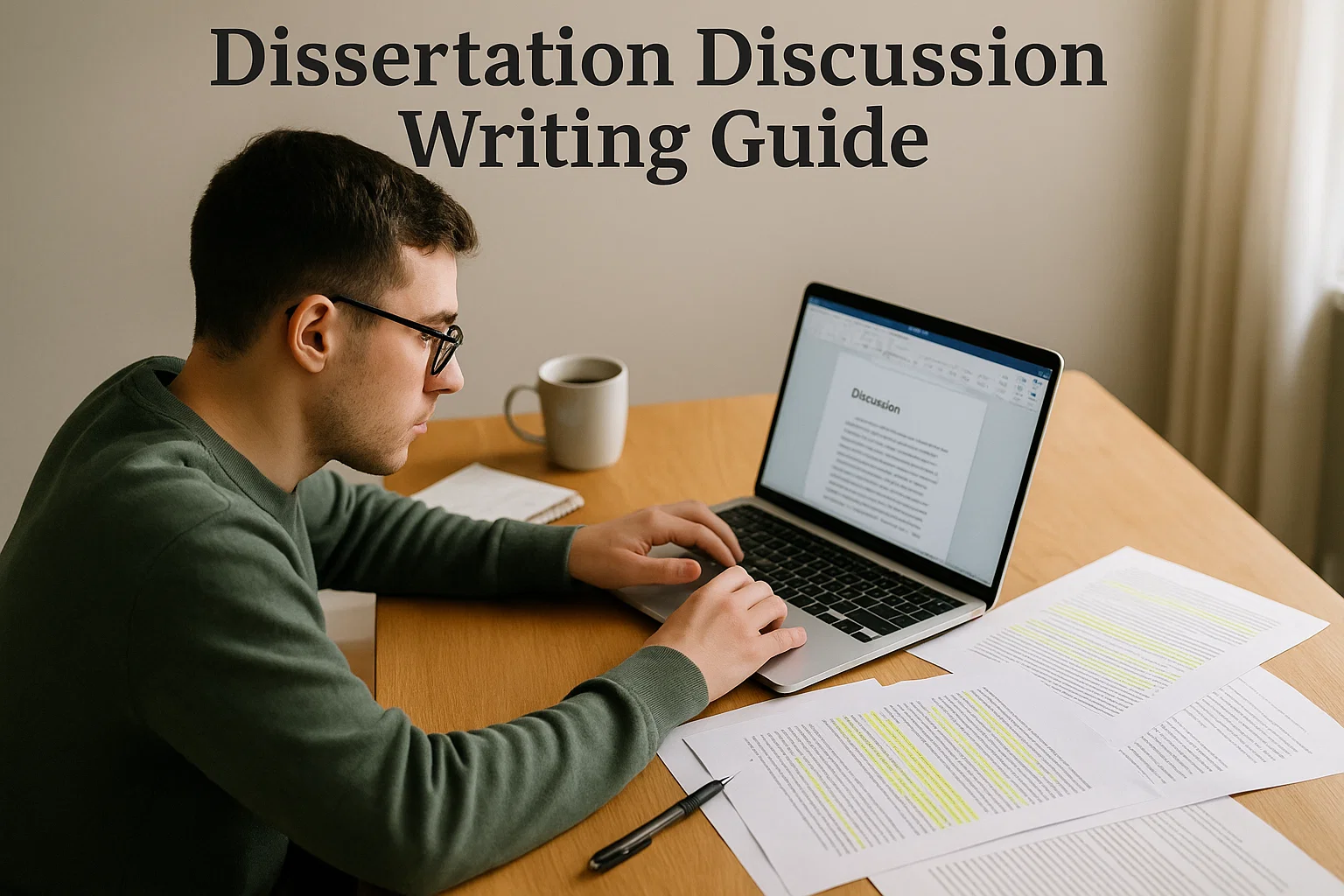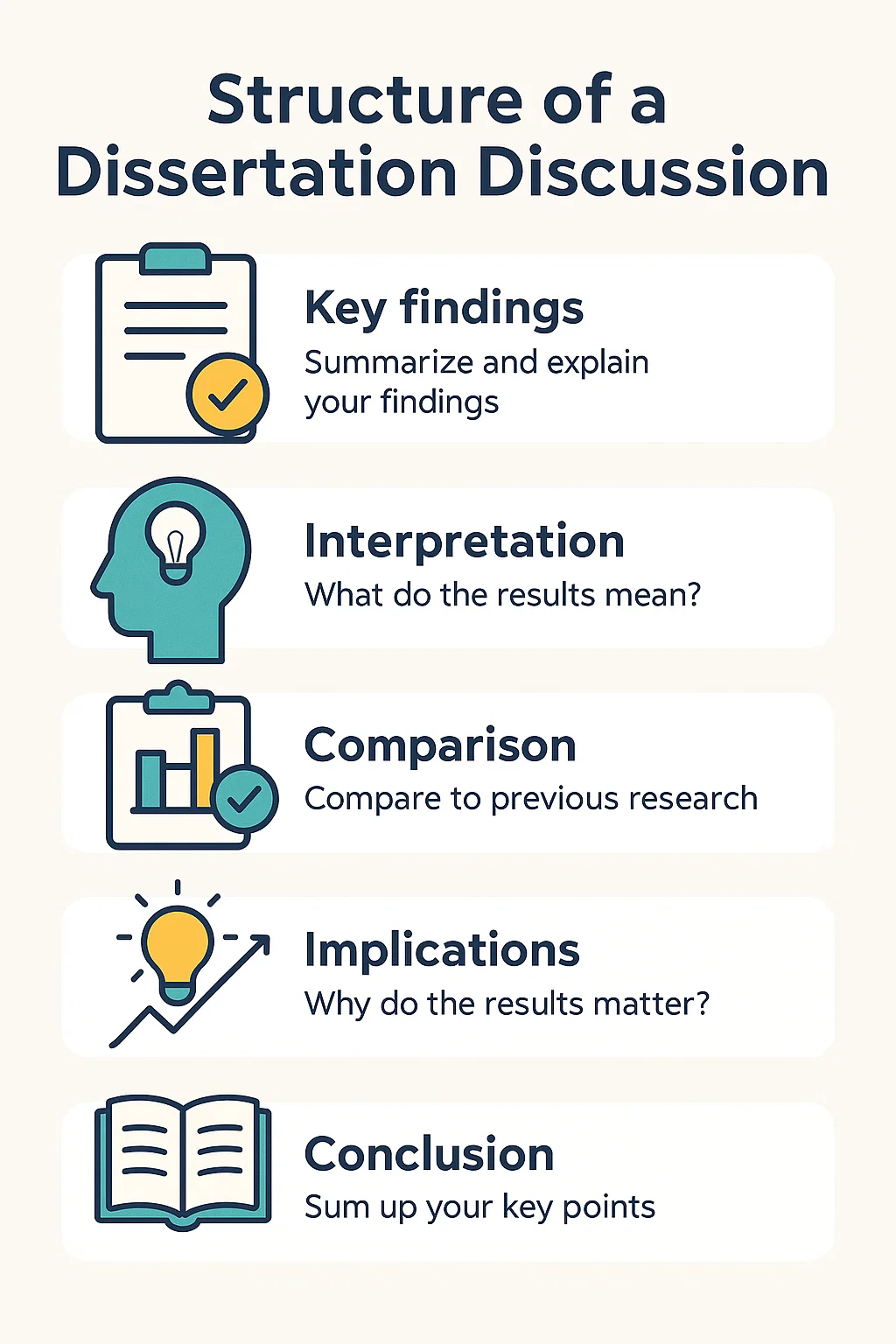Feels intimidating, right? You’re not alone. This is the part of your dissertation that decides whether your work shines or just… fizzles out.
The discussion chapter isn’t just about repeating results it’s where you show you actually understand what those results mean. It’s your moment to sound like a scholar, not just a student who followed a method.
Let’s make sure you nail it one confident paragraph at a time.
Why the Discussion Chapter Matters More Than You Think
Think of your discussion as the bridge between what you found and why it matters. It’s where your research finally speaks to the bigger academic picture.
Most examiners flip straight to this section first. Why? Because they want to see whether you can think critically, interpret findings, and connect them to real-world or theoretical implications.
If your findings and discussion chapters are solid, you’re halfway to that 2:1 or First-Class dissertation already. A strong discussion shows you didn’t just collect data you understood it.
Here’s the deal:
- Results show what happened.
- Discussion shows why it happened.
It’s your chance to interpret, evaluate, and argue your case. Like a lawyer in academic robes.
Starting the Discussion Without Overthinking It
The hardest part? Getting started.
Students often freeze up here because they think it has to sound ultra-academic. But the best discussions usually start simple summarising your main findings in plain English.
Try this approach:
“This study set out to examine the impact of [topic] on [population]. The findings suggest that [key result], which aligns with previous research by [author, year].”
Boom. You’ve just written your opening line.
The trick is to restate your aim and link it to your results not to the entire thesis. Then, move naturally into interpretation. Avoid saying things like “In conclusion” or “The purpose of this chapter…” that sounds like a script, not a real human writing.
Remember, your reader already knows this is the discussion. Just talk about your findings like you’re explaining them to someone intelligent but curious.
How To Structure a Discussion in a Dissertation
Here’s the simple truth structure saves you from chaos.
No matter your subject (psychology, engineering, or business), your discussion chapter should follow a logical rhythm.
A great structure looks something like this:
| Section | What to Include | Why It Matters |
|---|---|---|
| 1. Overview of Findings | Briefly summarise key results. | Sets the stage and reminds reader what you found. |
| 2. Interpretation | Explain what those results mean and why. | Shows analytical depth. |
| 3. Comparison with Literature | Link findings to previous studies. | Proves awareness of research context. |
| 4. Implications | Discuss how your research contributes to theory or practice. | Demonstrates impact. |
| 5. Limitations & Future Work | Be honest about constraints and what could come next. | Adds credibility and reflection. |
This isn’t just a list it’s your map.
If you follow it, you’ll hit every mark examiners look for when grading.
You can even use subheadings if your university allows them (many do). It helps readers follow your flow, especially in PhD thesis discussion chapter examples where clarity matters more than flair.
Interpreting Results Like a Pro (Even If You’re Stuck)
Here’s where most students lose their way. They either:
a) repeat their results like a robot, or
b) go full philosopher and start speculating without evidence.
You need balance.
Interpretation is about answering why your results turned out the way they did backed by reasoning and literature.
For example:
“The increase in engagement among participants could be attributed to the interactive design of the tool, supporting Bandura’s theory of self-efficacy.”
See how that connects data (increase in engagement) to theory (self-efficacy)? That’s academic gold.
If you found something unexpected don’t panic. That’s actually good! Examiners love when students acknowledge anomalies instead of ignoring them.
You can say:
“Contrary to initial expectations, the data revealed a weaker correlation between X and Y. This might be due to contextual factors such as sample diversity or measurement bias.”
Honesty and reflection beat forced perfection every time.
Dissertation Discussion Example Breakdown
Let’s peek at a quick dissertation discussion example you can learn from.
“The findings indicate a significant relationship between digital literacy and student engagement. This supports prior studies (Smith, 2022; Patel, 2021), which suggest that higher levels of digital competency improve academic motivation. However, the weaker link found in rural samples suggests that internet accessibility may play a moderating role.”
Now, why is this strong?
- It connects findings to past research.
- It acknowledges limitations (rural context).
- It keeps tone confident but balanced.
This kind of paragraph could fit right into a dissertation findings and discussion example PDF that gets shared in writing workshops.
When in doubt, follow the rule of Interpret + Compare + Reflect.
Length, Tone, and Flow Getting It Just Right
So, how long should a dissertation discussion be?
There’s no fixed number, but a good rule is 25–30% of your total word count. For an 8,000-word dissertation, that’s about 2,000–2,400 words.
Too short, and it looks like you’ve got nothing to say.
Too long, and it feels like a second literature review.
Keep your tone objective yet confident.
You’re not bragging, but you’re not unsure either. Avoid fillers like “it could be said that” or “perhaps” they weaken your authority.
Use transitional phrases like:
- “This suggests that…”
- “These results highlight…”
- “A possible explanation for this pattern is…”
They make your writing flow naturally without sounding stiff.
Common Mistakes That Cost You Marks
Let’s talk about the elephant in the room the stuff that quietly kills grades.
1. Repeating results instead of analysing them
Don’t just restate data; discuss what it means.
2. Forgetting to link to research questions
Every point should trace back to your original aim. If it doesn’t, cut it.
3. Ignoring contradictory evidence
Show maturity by addressing results that don’t fit your hypothesis.
4. No connection to literature
Always tie findings back to previous studies even briefly.
5. Overstating impact
You’re not changing the world yet; stay grounded in your actual contribution.
Want that 2:1 or First-Class mark? Avoid these, and you’re already ahead of half your peers.
Dissertation Discussion in Psychology or Science Fields
Now, if you’re writing in psychology, the discussion section takes a slightly different spin.
You’ll need to show understanding of both statistical outcomes and theoretical meaning.
Start by summarising your key findings (e.g., correlation strength, significant patterns) then explain why those results make sense within psychological theory.
Example:
“The observed link between stress levels and productivity supports Lazarus’s model of cognitive appraisal, which highlights individual perception as a key stress determinant.”
In fields like engineering or biology, your discussion might lean more towards mechanisms and practical implications rather than psychological meaning.
That’s fine the principle’s the same: connect results → explain meaning → highlight value.
If you want inspiration, search for PhD thesis discussion chapter examples in your field not to copy, but to feel the structure.
How to Tie It All Together With Impact
You’ve analysed, compared, and interpreted. Now what?
Your last few paragraphs should tie your discussion neatly back to your research aims and hint at future implications without re-summarising the whole thing.
You might say:
“Overall, the findings highlight the growing importance of digital literacy as both a predictor and facilitator of academic engagement. Future research could explore longitudinal effects to better understand this evolving relationship.”
See? Clean, confident, and forward-looking. That’s the tone you want to leave with.
Don’t write a mini conclusion that comes in the next chapter. Here, you just tie the bow.
Bonus: Checklist Before Submitting Your Discussion
Before you upload that final PDF, run through this quick self-check:
✅ Does each paragraph connect to a research question or objective?
✅ Have you explained why your results matter not just what they are?
✅ Did you balance strengths and limitations?
✅ Are your findings compared to key literature sources?
✅ Is your tone confident but not arrogant?
✅ Have you written transitions between sections smoothly?
✅ Is your discussion around 25–30% of total word count?
If you’re nodding yes, congrats you’ve just written a solid discussion section that’ll make your examiner smile instead of sigh.
Final Thoughts That Don’t Sound Like “Final Thoughts”
Let’s be honest the discussion chapter can make or break your dissertation. But it’s not some mystical, academic mountain. It’s just your chance to tell your story backed by evidence, shaped by theory, and written with purpose.
The best discussions feel alive they argue, reflect, and inspire curiosity.
So don’t aim for perfection; aim for clarity.
Your dissertation isn’t just a requirement it’s proof you can think, reason, and contribute to something bigger.
Now go on, write that discussion like it deserves to be read.

Rachel combines her technical expertise with a flair for clear, accessible writing. A graduate of the University of Edinburgh, she specializes in creating detailed tech-focused content, Govt Jobs, Payslips that educates our readers about the latest in web development and SEO tools at Spinbot blog.

